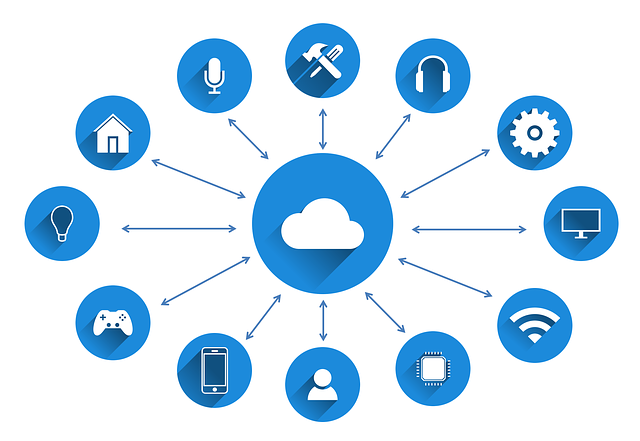How to Optimize Your Hybrid Cloud Architecture

The concept of the hybrid cloud architecture is quickly gaining traction, and it’s no surprise why: a blend of both public and private clouds gives organizations the power to customize their infrastructure for maximum efficiency. But how can you ensure your hybrid cloud setup is as optimized as possible? Look no further; we’ve got all the insider tips so that you can become an expert in taking advantage of your hybrid cloud architecture. Get some popcorn ready — this one’s going to be good!
Understand What is Hybrid cloud!
A hybrid cloud is a type of hosted cloud desktop computing environment that uses a combination of on-premises, private cloud, and third-party, public cloud services with orchestration between the two platforms. This approach allows organizations to choose the most appropriate deployment model for their specific workloads and use cases, enabling them to benefit from the capabilities and efficiencies of both types of clouds.
With a hybrid cloud, organizations can use their on-premises infrastructure for workloads that require low latency, high security, and compliance with specific regulations while leveraging the scalability and cost-efficiency of public cloud services for workloads better suited to a multi-tenant environment. This approach enables organizations to dynamically allocate and reallocate resources as needed, based on their changing business needs and priorities.
One of the key benefits of a hybrid cloud is the ability to seamlessly and securely integrate on-premises and public cloud environments. This enables organizations to easily and quickly move workloads between the two platforms as needed, without the need for costly and time-consuming re-architecting or refactoring. It also allows organizations to take advantage of the latest cloud-based technologies, such as artificial intelligence and machine learning, without having to overhaul their existing infrastructure completely.
Optimize Your Hybrid Cloud Architecture
Optimizing your hybrid cloud architecture is essential to ensure that your system runs efficiently and effectively. A hybrid cloud architecture combines public and private cloud services, which can provide organizations with the benefits of flexibility, scalability, and cost savings. In order to optimize your hybrid cloud architecture, there are a few key steps that you can take.
First, it’s essential to have a clear understanding of your organization’s specific needs and goals. This will help you to determine the right mix of public and private cloud services that will best support your organization. For example, a private cloud may be the best option if you have sensitive data that needs to be kept secure. Alternatively, if you need to be able to quickly scale up your resources to meet sudden spikes in demand, a public cloud may be the better choice.
1. Make sure you have the right cloud provider: Selecting the right cloud provider is paramount to optimizing Hybrid Cloud. Make sure the provider you choose offers the services you need and that they are reliable and cost-effective.
2. Leverage automation and orchestration tools: Automation and orchestration tools can help you manage and optimize your Hybrid Cloud environment. They can help you quickly provision and manage resources, as well as monitor performance and usage.
3. Implement a multi-cloud strategy: A multi-cloud strategy can help you optimize your Hybrid Cloud environment by allowing you to spread workloads across multiple cloud providers. This can help you reduce costs and improve performance.
4. Utilize cloud-native services: Cloud vdi native services can help you optimize your Hybrid Cloud environment by taking advantage of the cloud’s native capabilities. This can help you reduce costs, improve performance, and take advantage of the latest cloud technologies.
5. Monitor your environment: Regular monitoring of your Hybrid Cloud environment can help you identify areas of improvement and ensure that your environment is running optimally. Monitoring tools can help you track usage, performance, and cost.
Once you clearly understand your organization’s needs, the next step is to plan and design your hybrid cloud architecture carefully. This involves deciding on the specific public and private cloud services that you will use, as well as how they will be integrated and connected. It’s important to choose compatible cloud services that can work seamlessly together.
Another key step in optimizing your hybrid cloud architecture is carefully monitoring and managing your system. This involves keeping track of the performance and utilization of your cloud resources, as well as identifying and addressing any potential issues or bottlenecks. Several tools and technologies can help you with this, including monitoring and management platforms, analytics tools, and automation technologies.
Conclusion
In addition to monitoring and managing your system, it’s also important to regularly review and optimize your hybrid cloud architecture. This involves looking at how your system is performing, identifying areas for improvement, and making any necessary changes. For example, you may need to adjust the balance of public and private cloud services to meet your organization’s needs better, or you may need to upgrade or replace certain cloud services to improve performance.
Overall, optimizing your hybrid cloud architecture is an ongoing process that requires careful planning, monitoring, and review. By taking the time to understand your organization’s needs, carefully designing and integrating your cloud services, and regularly monitoring and optimizing your system, you can ensure that your hybrid cloud architecture runs efficiently and effectively.










